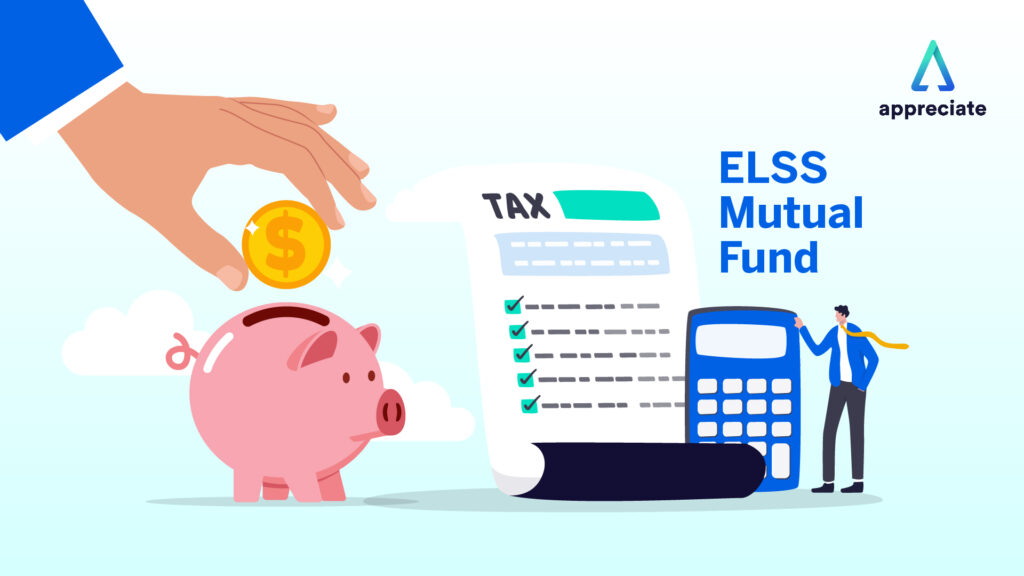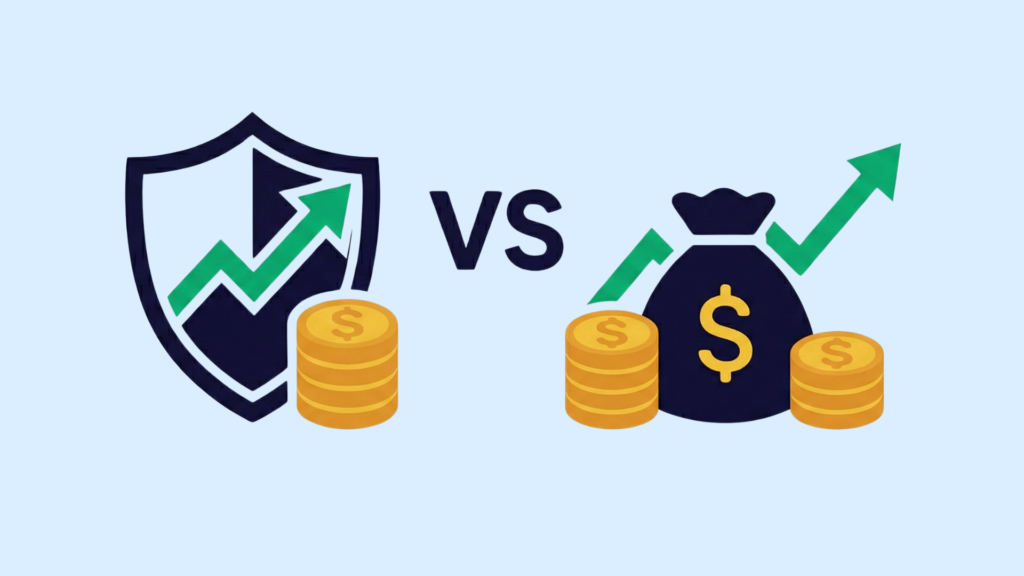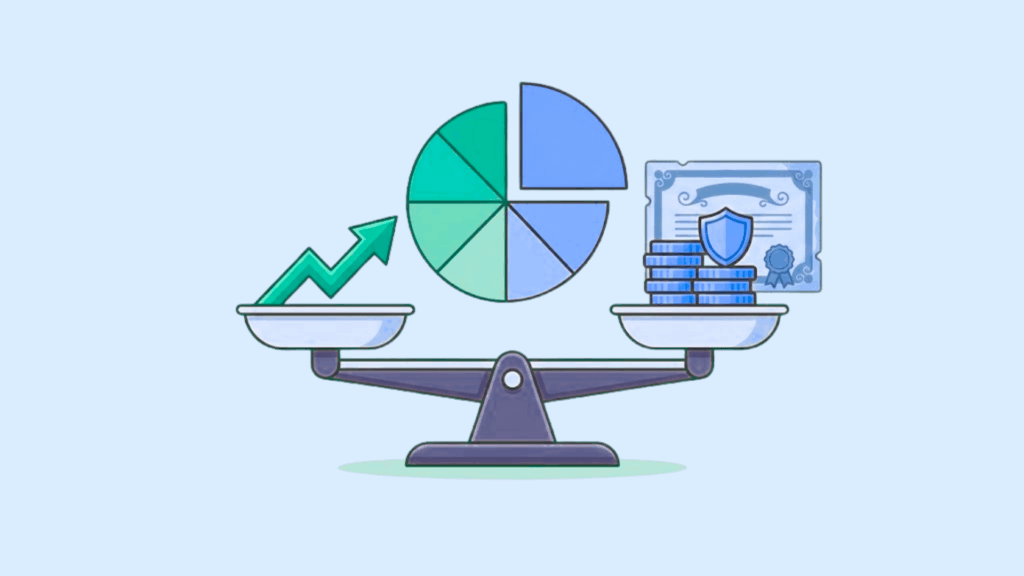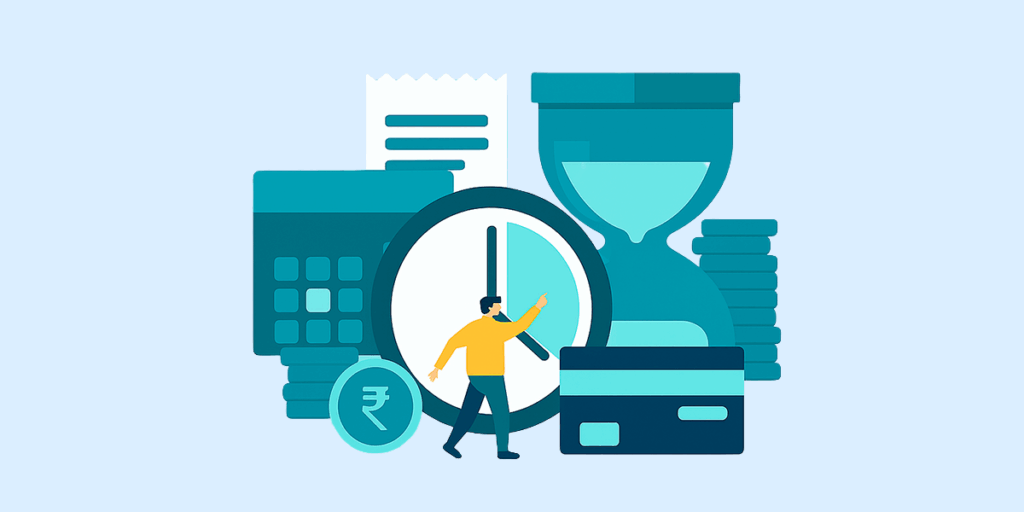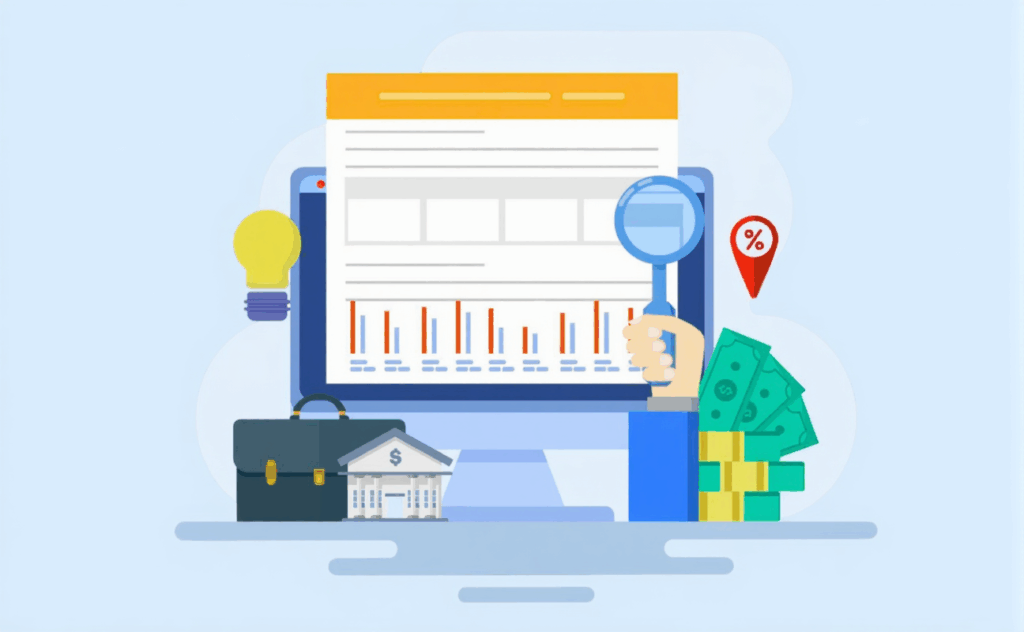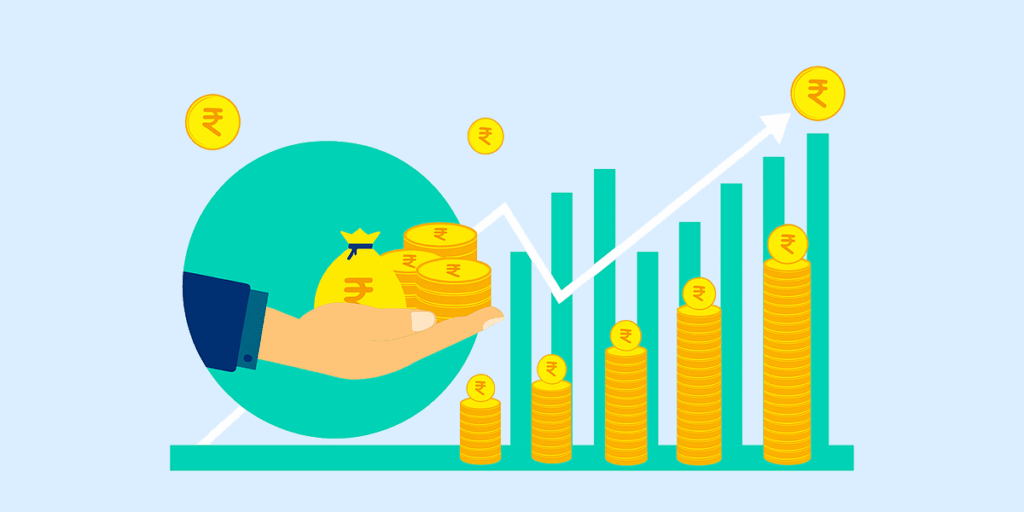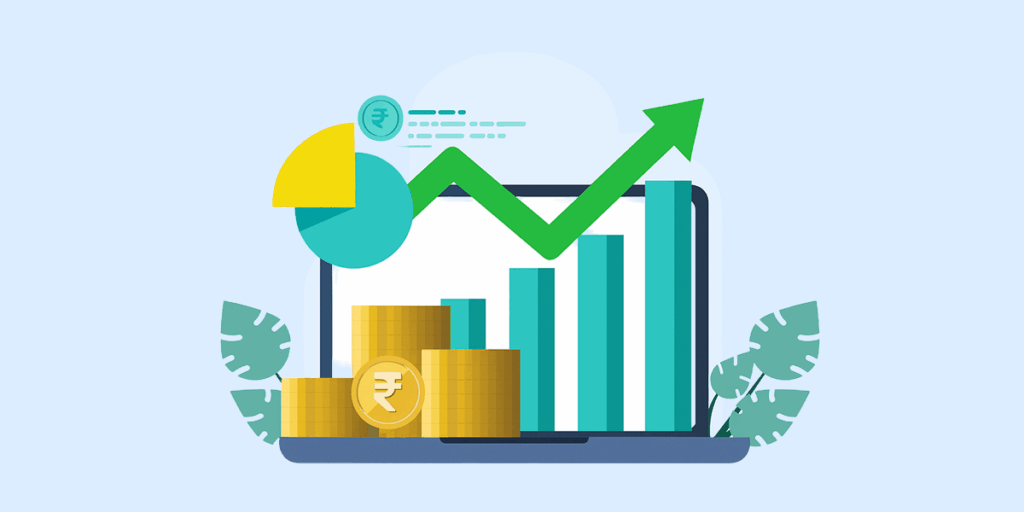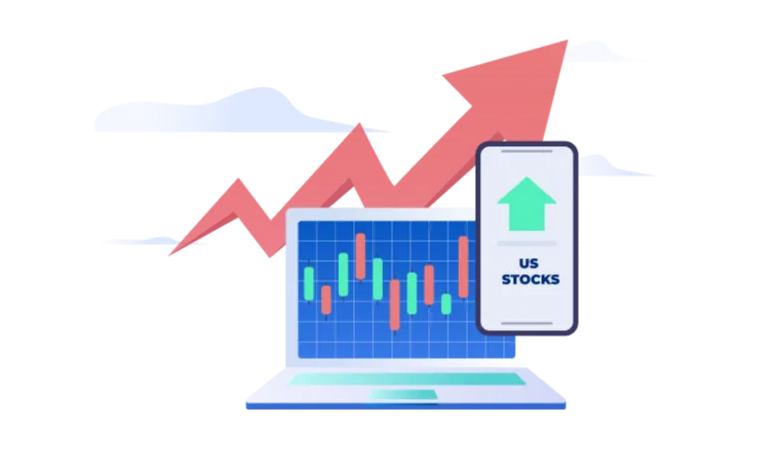Equity Linked Savings Scheme (ELSS) Mutual Funds are a popular tax-saving investment option under Section 80C of the Income Tax Act, 1961. These funds predominantly invest in equities, which offer the dual benefits of potential wealth creation and tax savings of up to ₹1.5 lakh annually.
With a short lock-in period of 3 years and the potential to deliver inflation-beating returns, ELSS funds are perfect for investors looking to grow their wealth while saving taxes efficiently. Read along to know more!
What is an ELSS Mutual Fund?
An ELSS Mutual Fund is a type of mutual fund that primarily invests in equities (stocks) and is designed to help you save taxes. It is entitled to tax deductions under Section 80C of the Income Tax Act, 1961, which allows you to claim a tax rebate of up to ₹1,50,000 in a financial year.
Here’s how ELSS mutual funds work:
- The fund manager invests your money in a mix of large-cap, mid-cap, and small-cap stocks across various sectors.
- The goal is to generate long-term growth while offering tax-saving benefits.
- You can start investing through a lump sum amount or via SIP (Systematic Investment Plan), which allows you to invest small amounts regularly.
Also Read: Direct vs Regular Mutual Funds | What is AMU in Mutual Funds? | How to Invest in Mutual Funds
Key Features of ELSS Mutual Funds
Equity Linked Savings Schemes primarily invest in equity, offering higher return potential compared to traditional tax-saving instruments. Here’s a closer look at their features:
Tax-Saving Benefits
ELSS allows tax deductions of up to ₹1.5 lakh annually under Section 80C of the Income Tax Act, 1961. This helps you save up to ₹46,800 in taxes, depending on your tax slab.
Compared to other options like PPF (Public Provident Fund), NPS (National Pension Scheme), and FD (Fixed Deposit), ELSS has a unique combination of tax benefits and equity exposure for better returns.
Lock-In Period
ELSS funds are subjected to a compulsory lock-in period of 3 years, the shortest among tax-saving instruments. After the lock-in, you can withdraw your investment or continue to let it grow.
This shorter period provides liquidity sooner, making it suitable for investors with medium-term goals.
High Return Potential
ELSS funds invest primarily in equity markets, offering the potential for higher returns over time. While returns are market-linked and may vary, they often outperform traditional options like fixed deposits or savings accounts in the long run.
Investment Options
The different types of ELSS investment options are:
- Lump Sum: Invest a one-time amount for tax benefits and returns.
- SIP (Systematic Investment Plan): Contribute periodically (e.g., monthly) to reduce the impact of market volatility and benefit from compounding.
Flexibility and Ease of Investment
Start investing in ELSS funds online through apps, websites, or financial advisors. Based on your financial goals, you can choose from growth (capital appreciation) or dividend (regular payouts) options.
Also Read: What are Liquid Funds | Difference Between Stocks and Bonds
Why Invest in ELSS Mutual Funds?
ELSS funds are a unique investment option combining tax savings with the opportunity to grow your wealth. Why? Here are some reasons:
Dual Benefits
Investing in ELSS lets you claim tax deductions of up to ₹1.5 lakh annually under Section 80C of the Income Tax Act. Additionally, its equity investments provide the potential for higher returns over time, making it a smart choice for building wealth.
Diversification Across Sectors
ELSS funds spread investments across various sectors, reducing risk while capitalising on growth opportunities in diverse industries. This diversification strengthens your portfolio’s potential for stable returns.
Ideal for First-Time Investors
If you’re new to mutual funds, ELSS is a great starting point. It gives you exposure to equity markets while also providing tax benefits. You can start small through a Systematic Investment Plan (SIP), investing fixed amounts monthly.
Also Read: Hybrid Mutual Funds | Debt Mutual Funds
How to Invest in ELSS Mutual Funds?
Investing in ELSS Mutual Funds is simple and can be done online or offline. Here’s a step-by-step guide to help you start your journey toward tax savings and wealth creation.
Steps to Invest in ELSS
- Choose a Reliable Mutual Fund Provider or Platform: Select a trustworthy mutual fund house or investment platform. Look for user-friendly interfaces, transparent processes, and reliable customer support.
- Select the Right ELSS Fund: Evaluate various ELSS funds based on their past performance, risk level, and alignment with your financial goals.
- Decide Between SIP or Lump Sum Investment:
- SIP (Systematic Investment Plan): Invest small, fixed amounts at regular intervals (e.g., monthly).
- Lump Sum: Make a one-time investment.
- Complete the KYC Process: Complete the Know Your Customer (KYC) requirements by submitting your identification (Aadhaar, PAN card) and proof of address. This is mandatory to invest in mutual funds.
- Start Investing and Monitor Your Portfolio: Begin your investment and periodically track the fund’s performance to align with your financial objectives.
Also Read: NFOs in Mutual Funds | Equity Mutual Funds
Important Factors to Consider Before Investing
Additionally, here are some pointers that you should evaluate before making an investment decision:
- Fund Performance: Review the fund’s historical returns over 3, 5, and 10 years to gauge its consistency and potential.
- Expense Ratio: Choose funds with a lower expense ratio (the cost of managing the fund) to maximise your net returns.
- Risk Appetite: Assess your ability to handle market fluctuations, as ELSS funds invest primarily in equities, which can be volatile.
- Fund Manager Expertise: Investigate the experience and track record of the fund manager, as their decisions significantly impact returns.
Also Read: Growth Mutual Funds | Income Fund
Benefits of ELSS Mutual Funds
ELSS Mutual Funds deliver a unique combination of tax savings and wealth creation, making them a popular choice for investors. Some of the primary benefits of investing in Mutual Funds are:
Highest Returns Among Tax-Saving Options
ELSS funds have consistently delivered higher returns compared to other Section 80C investments like FDs and PPFs. Their equity exposure enables better growth over the long term.
Compounding Benefits via SIP
Through SIP, you can invest small amounts regularly. This approach helps you build wealth over time by using compounding, where your returns generate additional earnings.
Professional Fund Management
Your investments are handled by experienced and skilled fund managers and supported by a team of financial analysts. They ensure optimal allocation of funds and manage risks effectively to maximise returns.
Inflation-Beating Returns
ELSS funds mainly invest in equities, which have the potential to deliver returns higher than inflation. This helps in preserving and growing the real value of your money.
Also Read: Interval Funds | TREPS in Mutual Funds
Risks Involved in ELSS Mutual Funds
While ELSS Mutual Funds offer significant benefits, they come with certain risks that you should be aware of before investing:
Market-Linked Risks
ELSS funds mostly invest in equities, making them vulnerable to market fluctuations. Returns depend on market performance and are not guaranteed, which means there’s a possibility of losses.
High Risk for Short-Term Investors
Equity investments tend to be volatile in the short term. If you aim to invest for less than five years, ELSS may expose you to higher risks, including potential losses.
No Premature Withdrawal
ELSS funds come with a mandatory lock-in period of three years, restricting liquidity. This can be challenging during financial emergencies, as withdrawals are not allowed within this timeframe.
Also Read: Corporate Bonds | What is CAGR in Mutual Funds | Mutual Fund Expense Ratio
ELSS Mutual Funds vs. Other Tax-Saving Investments
When evaluating tax-saving options, comparing ELSS Mutual Funds with alternatives like PPF, FDs, and NPS can help you choose the right fit for your goals.
Comparison of Lock-In Periods
Let’s start by comparing the lock-in period of different tax-saving investments:
- ELSS: 3 years (shortest among Section 80C options).
- PPF: 15 years (with partial withdrawals allowed after 5 years).
- FD: 5 years (no premature withdrawals permitted).
- NPS: Locked until retirement (partial withdrawals are restricted).
Return Comparison
The returns provided by different investments are:
- ELSS: Market-linked returns, generally in the range of 10–12%, higher than traditional options.
- PPF: Fixed returns, currently around 7–8%, set by the government.
- FD: Fixed returns, typically 6–7%, depending on the bank and tenure.
- NPS: Market-linked returns, influenced by equity and debt allocation.
Liquidity Comparison
When talking about liquidity, here’s how different investments compare:
- ELSS: Investments become fully liquid after 3 years, offering flexibility.
- PPF: Limited liquidity with partial withdrawal rules.
- FD: No liquidity until maturity, with penalties for breaking tenure.
- NPS: Least liquid, with withdrawals limited to specific conditions before retirement.
Also Read: Close-ended Mutual Funds | Open-ended Mutual Funds | Mutual Fund Taxation
Taxation on ELSS Mutual Funds
ELSS mutual funds investments can help you save taxes under Section 80C, but it’s important to understand how the returns are taxed.
Long-Term Capital Gains (LTCG)
When you sell your ELSS units after holding them for more than 3 years, the gains are considered LTCG. The first ₹1 lakh of LTCG earned in a financial year is tax-free. However, any gains exceeding ₹1 lakh are taxed at a rate of 10%, and no benefit of indexation is available, which means inflation is not factored in when calculating the taxable amount.
Dividend Income Tax
Dividends received from ELSS funds are treated as part of your total income and taxed according to your income tax slab. For example, if you fall under the 20% tax bracket, the dividend income will be subjected to taxation at 20%. This means that your overall income, including dividends, will be added together to determine the rate at which your income is taxed.
Also Read: Net Asset Value (NAV) in Mutual Fund | Fixed Income Mutual Fund
Who Should Invest in ELSS Mutual Funds?
ELSS funds are suitable for various types of investors depending on their financial purposes and investment horizon. The best-suited investors are:
Ideal for Salaried Individuals
If you’re a salaried individual looking to save taxes while building wealth over the long term, ELSS mutual funds can be a suitable option. This is because these funds offer tax benefits under Section 80C, which allows you to claim deductions on investments up to ₹1.5 lakh in a financial year.
Suitable for Long-Term Investors
Over the long run, these funds have the potential to generate higher returns, making them suitable for investors who can ride out market fluctuations and hold their investments for at least three years.
First-Time Investors Seeking Equity Exposure
If you’re new to investing and want to explore equities while also reaping tax benefits, ELSS funds can be a good starting point. They provide exposure to the equity market with the added advantage of tax deductions, making them an attractive option for first-time investors.
Also Read: How to Read Stock Market Charts | Dollar Cost Averaging
The Bottom Line
ELSS mutual funds offer the double benefits of tax savings and the potential for high returns, making them a good option for long-term investors with a higher risk appetite. However, they come with market-related risks and require a longer investment horizon to weather volatility.
Therefore, consider your financial goals, risk tolerance, and time frame before investing. Plus, Appreciate is the best trading app that can help guide you in choosing the right ELSS mutual funds by providing expert advice tailored to your needs and helping you make informed decisions.
Download the Appreciate trading app now!
ELSS Mutual Funds FAQs
How does ELSS help in saving tax?
ELSS investments qualify for tax deductions under Section 80C of the Income Tax Act, allowing you to save up to ₹1.5 lakh in taxes annually. This reduces your taxable income, also lowering your tax liability.
What is the lock-in period for ELSS funds?
The lock-in period for ELSS mutual funds is three years. This means you cannot redeem your investment before this period ends.
How is ELSS different from other tax-saving options?
Unlike traditional tax-saving options like PPF or FD, ELSS invests in equities offering higher return potential. However, it also comes with higher market risk due to its equity exposure.
Can I withdraw my ELSS investment before 3 years?
No, you cannot withdraw your ELSS investment before the 3-year lock-in period. This lock-in period is mandatory for all ELSS schemes.
How much return can I expect from ELSS?
The returns on ELSS mutual funds depend on market performance and can vary, but historically, they have outperformed traditional tax-saving options.
Are ELSS funds risky?
Yes, since ELSS funds primarily invest in equities, they are subject to market risks. Over time, the value of your investment can fluctuate depending on market conditions, especially in the short term.
How to choose the best ELSS fund?
To choose the best ELSS fund, look at the fund’s past performance, expense ratio, and the expertise of the fund manager. Additionally, consider the fund’s risk profile and how it aligns with your investment goals.
What is the minimum investment amount for ELSS?
The minimum investment amount for ELSS mutual funds typically starts at ₹500 for a Systematic Investment Plan (SIP). For lump sum investments, it may vary, but many funds accept amounts as low as ₹1,000.
Is SIP a good option for ELSS?
Yes, SIP (Systematic Investment Plan) is a good option for ELSS as it allows you to invest small amounts regularly, benefiting from compounding over time.
What happens after the ELSS lock-in period ends?
After the 3-year lock-in period ends, you can redeem your ELSS investment or choose to continue holding it. However, any gains made after the lock-in period will be subject to tax based on the applicable long-term capital gains tax rules.
How are ELSS returns taxed?
ELSS returns are subject to long-term capital gains (LTCG) tax if held for more than 3 years. Gains up to ₹1 lakh in a financial year are tax-free, and any amount above ₹1 lakh is taxed at 10%.
|
Here are more investment opportunities for stocks and shares that might interest you. |
|
Disclaimer: Investments in securities markets are subject to market risks. Read all the related documents carefully before investing. The securities quoted are exemplary and are not recommendatory.

